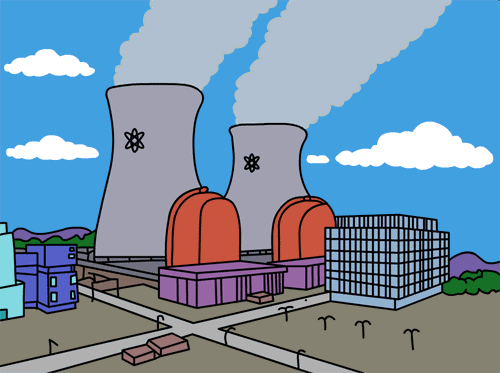Nuclear Photographs

In 1889, George Eastman founded the Eastman Kodak company in order to produce and market his invention — spool-wound photographic film. Kodak would become the leader in that market for generations. For more than a century since, the company has been researching new ways to innovate; over the years, the company developed dozens of different products and was granted hundreds of patents.
And along the way, the company also built itself a nuclear reactor.
Yes, nuclear reactor — as in a machine which took weapons-grade uranium and churned out a controlled, sustained nuclear reaction. The machine, as reported by the Democrat and Chronicle, had three-and-a-half pounds of “highly enriched uranium [ . . .] the stuff that nuclear bombs are made of [and which] terrorists covet” in an underground research laboratory in Rochester, New York. For Kodak, the nuclear materials were used as part of research into a theory called “neutron imaging” — the process of using subatomic particles to create an image of a material without damaging the material being imaged. (Why they wanted to do this is anyone’s guess.) In 1974, the company required a small reactor to investigate this process further, and, over the three decades after, found other, non-warfare uses for the machine as well.
While the reactor was never a secret — the Democrat and Chronicle learned of it when a Kodak employee mentioned it in passing — it was also, perhaps, the best kept non-secret in the area’s and company’s history. City officials told the Democrat and Chronicle that they were wholly unaware of the tiny nuclear threat in their own jurisdiction, and a company spokesperson told the paper that she “wasn’t sure whether the company had ever notified local police, fire, or hazardous-materials officials.”
But that isn’t to say that no one knew. Federal regulators were informed of the facility and, when Kodak shut it down in 2007, the Feds were involved in safely removing the radioactive materials and waste. And while details on the Kodak nuclear lab are scant, there is no evidence of any leaks, thefts, or any other scary things.
Bonus fact: Due in no small part to the emergence of digital photography, Kodak filed for bankruptcy in early 2012, and has until February 2013 to come up with a turn-around strategy; otherwise, it will likely have to liquidate its assets. But to say that the company failed to innovate — especially in spite of extensive research and development such as the nuclear program discussed above — is incorrect. As the New York Times reported, Kodak invented one of the world’s first “film-less” digital cameras — in 1975. Various reports suggest that Kodak killed the project as it threatened their core business of selling film.
From the Archives: The First Photograph of a Person: Self-explanatory, but likely unintentional.
Related: Uranium ore. Build your own Kodak-style R&D lab.

Leave a comment